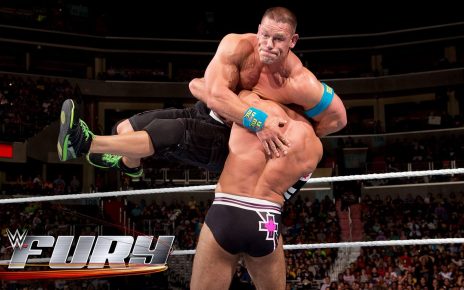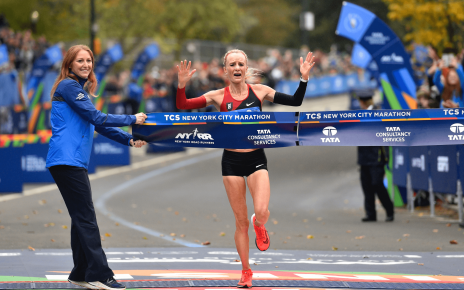FOOTBALL. The game of American football as played today by high school, college, and professional teams grew out of rugby-style football which in the mid-1870s replaced a largely kicking game known as association football. Although initially played on village greens and on college fields, the first intercollegiate game took place on 6 November 1869 when Rutgers defeated Princeton 6–4 in a soccer-style game. Five years later, Montreal’s McGill University playing at Harvard introduced rugby football, which would be rapidly adopted by eastern teams.
Collegiate Development
For the first fifty years of football, college teams enjoyed a virtual monopoly of what they called the gridiron (the term applied to the football field because of the lines drawn at five-yard intervals). In 1876, students at Harvard, Princeton, Columbia, and Yale met to form the Intercollegiate Football Association, all agreeing to play by rugby rules. Of the four schools, only Yale chose to re-main an independent. Nevertheless, Yale continued to meet with the other schools and played a crucial role in the adoption of new rules and in the popularization of American football. Beginning in the 1880s, the eastern institutions led by Yale played “big games” before large crowds in the New York and Boston areas. From 1880 to 1888, changes in the intercollegiate rules led to the transformation of British rugby into American football. The possession rule of 1880, which decreed that the team with the ball would keep possession if tackled, led to a series of further changes. The result was a game of physical contact and deception that had progressively less in common with rugby and association football.
The possession rule and the changes that accompanied it were associated with Walter Camp, a player for Yale in the late 1870s. A gifted strategist and promoter, Camp served as a coach or adviser to the Yale team from 1879 to 1910 and as the key figure on various rules committees. Through devices such as his All-America teams, he was also instrumental in making football a nationwide intercollegiate sport. Led by Camp, the handful of youthful rules-makers enacted the yards and downs rule (three downs to gain five yards), numerical scoring, interference in front of the ball carrier, and tackling between the waist and the knees (rather than above the waist). Players could move forward before the snap of the ball (momentum plays), and push and pull the ball carrier through the defense (mass play). As a result of these rules changes, football became noticeably rougher and by the late 1800s was criticized by clergy, newspaper editors, and some older college faculty and administrators for its dangers and brutality.
In the 1890s, football spread rapidly to colleges in every part of the country. Spearheaded by former players or “missionary coaches,” the teams closely followed the rules and rituals of eastern colleges, including Thanksgiving Day rivalries such as Michigan and Chicago or Stanford and California. As football gained in popularity with students and alumni, criticism of the game among faculty, college presidents, and crusading journalists grew more shrill, especially at a time when several players were killed or seriously injured each year.
On 9 October 1905, just after the beginning of the football season, President Theodore Roosevelt met with six alumni gridiron advisers from Yale, Harvard, and Princeton, including Camp and Coach Bill Reid of Harvard. Roosevelt secured their pledge to draw up a statement in which they would agree to eliminate brutal and unsportsmanlike play. Contrary to a widely held belief, Roosevelt did not issue an edict to the colleges, nor did he have a direct role in reforming the rules. In October and November 1905, football at all levels had eighteen fatalities—three in college play—and 159 serious injuries.
Following the death of a Union College player in a game against New York University, Chancellor Henry MacCracken of NYU called a meeting of nineteen colleges to consider the evils of football. That gathering in early December 1905 of twenty-four delegates led to a second, larger conference, which met in New York late in the same month. The more than sixty colleges represented appointed a reform rules committee. In addition, they organized themselves into the Intercollegiate Athletic Association of the United States (ICAA), predecessor of the National Collegiate Athletic Association (NCAA), to challenge the older, big-college football committee. Meeting together, the two committees agreed to sweeping gridiron reforms, including the ten-yard rule (ten yards to be gained in three downs), six men on the line of scrimmage and a defined neutral zone between the teams, stiffer penalties, and the forward pass. Although the number of injuries declined under the new rules, another round of deaths and injuries in 1909 led to the enactment of more comprehensive rules between 1910 to 1912.
Football in the 1920s and 1930s
After World War I, both college football and the fledgling professional version of the game prospered as a result of the booming economy and the remarkable popularity of major sports. Thousands of gridiron enthusiasts flocked to the newly constructed stadiums modeled after the Harvard, Yale, and Princeton stadiums. In October 1924, Harold “Red” Grange of Illinois became football’s best-known player when he ran for five touchdowns and passed for a sixth in a game against Michigan. After his final college game, Grange signed a contract with the professional Chicago Bears of the National Football League (NFL). He immediately played to overflow crowds in Chicago and New York and agreed to lucrative deals for endorsements and movie appearances. The highly publicized and profitable entry of the “Galloping Ghost” into pro football was a precursor to the wealth of NFL players later in the twentieth century.
Just as football grew at the college level, it also took hold in the high schools. Football had been played at private secondary schools since the 1880s, and some public schools fielded teams in the 1890s and early 1900s. Promising players at private schools and high schools became the object of fierce recruiting struggles by the colleges. In the early 1900s, the emergence of the larger consolidated high schools created a need for football as a means of forging loyalties among large and diverse student bodies. Even before World War I, some coaches became known in high school football before moving up to the college level.
Football was also widely played as an unorganized, sandlot sport, or as a supervised playground recreation. By 1929, many of the serious injuries and occasional deaths in the first three decades of the twentieth century occurred during unsupervised play. Because of the need for protective equipment and adult supervision, youth leagues gradually evolved. What became the Pop Warner Leagues began as a local Philadelphia area football club in 1929. The organization was later renamed for Glenn Scobie “Pop” Warner, best known as a college coach at Carlisle Indian School, the University of Pittsburgh, and Stanford University. Beginning in 1947, the Pop Warner Leagues initiated their own national championship modeled after college and professional competitions in football and other sports.
Professional football had originated in the towns of western Pennsylvania and taken root in the smaller cities of Ohio. In 1920, a group of midwestern teams met to form the American Professional Football Association, changed the next year to the National Football League. In the 1920s and 1930s, NFL teams often went bankrupt or moved and changed names, and professional football ranked a distant second to college football in popularity
and prestige. Only after World War II, with the advent of television and air travel, did the NFL and other leagues challenge the college game.
Post–World War II Football
Television, a medium that rapidly expanded in the 1940s and 1950s, proved well-suited to the gridiron game. After setting records in the first years after World War II, attendance at college football games began to slump from 1949 on. The alarmed NCAA members ceded to their TV committee the right to control or even to ban college football telecasts. In 1951, the NCAA contracted with Westinghouse (CBS) television network to televise one game each Saturday, later broadening the agreements to include several regional games. This cartel would help to strengthen the power of the NCAA, but it would also lead to near rebellion within the association in the 1980s.
Although college football attendance revived, professional football rapidly surpassed its collegiate parent. A national audience watched a gripping telecast of the NFL championship game in 1958 when the Baltimore Colts won a dramatic sudden-death overtime victory against the New York Giants. Frustrated by the NFL’s cautious approach toward expansion, the oil billionaires Lamar Hunt and Bud Adams began the American Football League (AFL) in 1959, with its first game in 1960. Bolstered by a network contract, the AFL challenged the NFL for blue-chip draft choices and TV audiences. In 1966, the AFL and NFL agreed to merge, and an annual championship known as the Super Bowl was played between the two leagues after the following season, though they would not become one league with two conferences until 1970. That year, ABC Sports innovator Roone Arledge teamed up with NFL commissioner Pete Rozelle to launch “Monday Night Football,” an instant hit on prime-time evening television. Professional football franchises, which had once struggled for attendance, became businesses worth millions of dollars.
Although the players’ salaries rose, they would not reach the levels achieved by major league baseball until the 1990s. Strikes in 1974 and 1987 led to victories by the owners, who effectively blocked the free agency that had resulted in soaring salaries in major league baseball. Attempts to found new professional leagues—the World Football League in 1974–1975, the United States Football League in 1983–1985, and the XFL in the winter of 2000—failed to breach the NFL cartel. Only the Canadian Football League (CFL), arena football played indoors, the World League of American Football (an NFL minor league with teams mainly in Europe), and the Women’s Professional Football League (WPFL) offered an outlet for players who could not play in the NFL.
Following World War II, African American players appeared in rapidly growing numbers both in college and professional ranks. In college football, a handful of black players had participated since the 1890s in the East, Midwest, and West. In addition to being subjected to harassment and brutality, these players were by mutual consent “held out” of games with southern teams. In the postwar years, colleges outside the South refused to accept these “gentlemen’s agreements” that kept blacks out of games. Except in the South, the number of African American players grew steadily in the 1950s. Southern teams were not integrated until the late 1960s and early 1970s. In 1961, Ernie Davis of Syracuse became the first African American Heisman Trophy winner.
African Americans had played professional football in the early 1900s. A handful played in the early years of the NFL. In 1934, the league’s last players, Jack Lilliard and Ray Kemp, were forced out of pro football. After World War II, the Cleveland Browns of the new All America Football League (AAFL) and the Los Angeles Rams of the NFL both integrated their teams, and the number of black professional players would show a steady increase after 1950.
College Football in the Age of the NFL
In the 1960s, college football enjoyed a brief period of prosperity and relative calm. In the fall of 1966, 33 million viewers watched a fierce struggle between Michigan State and Notre Dame, the college game’s version of the Giants-Colts showdown in 1958. ABC’s innovations in telecasting and the advent of color television brought more revenue and recognition to big-time teams and their coaches.
Following World War II, many teams adopted two-platoon football in which teams had separate defensive and offensive units (the innovation doubled the need for scholarships and players). Unnerved by rising costs and wedded to past practice, the NCAA football rules committee attempted in the 1950s to banish two-platoon football but returned to unlimited substitution by the end of the decade. (Unlike the colleges, the NFL never tried to abolish separate offensive and defensive teams.)
In 1951, nearly fifty institutions dropped football because of rising costs and dwindling attendance (some of these such as Georgetown, Fordham, and Detroit were ranked in the top twenty in the 1920s and 1930s). In the East, eight Ivy League institutions adopted joint rules deemphasizing football. They began less costly round-robin play in 1956 and eliminated spring practice, football scholarships, and postseason contests.
After World War II, the NCAA failed in its first attempt to regulate subsidies for supposedly amateur players. The subsequent scandals created support both for deemphasis of big-time football and for a nationwide system to enforce athletic codes of conduct. Other scandals involved booster clubs that funneled illicit payments to players and recruits. Beginning in 1956, a series of pay-for-play schemes were uncovered at five institutions in the Pacific Coast Conference, contributing to the conference’s demise in 1959. Stepping into the vacuum, the NCAA levied stiff penalties against offenders, including bans on TV appearances. The commercial model pursued by many college football conferences led to charges that colleges had become the minor leagues for professional football. To some extent, the charges were true. Not only did the colleges supply the training for NFL recruits, but coaches also moved easily between the professional and collegiate ranks.
The quest for revenues in college football proved both a motivator for top teams and a cause of internecine quarrels. Faced with rising expenditures in the 1970s, big-time college teams opposed sharing TV revenues with NCAA members who had smaller football teams or no teams at all. Formed in 1976 as a lobbying group within the NCAA, the College Football Association (CFA) proposed to negotiate their own TV contracts. In 1984, two CFA members, Georgia and Oklahoma, won a Supreme Court decision against the NCAA, thereby ending the association cartel. Institutions and conferences within the association would now be responsible for their own TV contracts.
Unlike professional football, Division I-A football, comprising the most prominent intercollegiate football institutions, had no playoff championship. Beginning in 1998, the NCAA initiated the bowl championship system to replace the mythical champion chosen by sportswriters and coaches. Using a variety of methods, including computer ratings, the NCAA chose the top two teams to play in one of the major bowl games, the designations of which rotated from year to year. Critics pointed out that college football still was the only college or professional sport that did not choose the champion by playoffs.
Conclusion
Beginning in the late nineteenth century, American football developed far differently from rugby football and association football (soccer, as it is referred to in the United States). Unlike baseball and basketball, American football has been largely confined to the United States and Canada. It has remained a predominantly male game, though a women’s professional league has fielded teams, and female place kickers have competed at the high school and college levels. Whereas baseball was once clearly the American pastime, football has gained preeminence at the high school, college, and professional levels. In addition, football has developed a distinctive fan culture. Tailgating or picknicking in the parking lot, participating in booster clubs, and traveling vast distances for Bowl games or intersectional rivalries have become part of the football culture of dedicated spectators. Moreover, the availability of football through cable and network TV has transformed millions of television viewers who seldom attend a major contest into knowledgeable and enthusiastic football fans.





